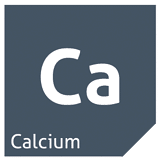Although the future seems uncertain right now, two things are certain: the world needs farmers more than ever, and seeding is just around the corner. We want to make sure you know we’re here to help, and we will continue to provide agronomic information to help you make the best decisions for your upcoming crop. Please enjoy the article below on the importance of seed nutrition in getting your crop off to a strong start.
The leading experts in the field of plant nutrition have long reported, for the major crops grown around the world, that seeds are nutrient imbalanced and can benefit from the fortification of essential nutrients as part of the seed coating. This international research shows that nutrient fortification increases germination, seedling vigor, rooting, and overall crop productivity.
The History of the Seed Nutrient Dressing

The value of enriching seed with nutrition was first documented in 1626 by Sir Francis Bacon. At the time, Sir Bacon soaked seeds in a “nutrient” solution that is a little crude by today’s standards. It included a blend of animal dung, human urine, chalk and wine which provided a stimulatory effect on the young seedling.
Fast forward four centuries and technology has transformed that initial “blend” both in performance and user convenience. Today, people in China, India, Europe and Australia have taken Sir Bacon’s findings and enriched cereals and rice seed with essential nutrients such as Zinc (Zn) and/or Iron (Fe) with fantastic results.
In North America, and especially in Canada, treating seed with nutrition is still a young market. Over the past 30+ years, there has been significant research focused on adding biological populations to the seed (eg. Bacillus, Penicillium) to provide a plant stimulating effect, but none of these organisms is a replacement for the essential nutrients required by seed. The good news is considerable research has been done to determine the essential nutrients required to balance the seed and ultimately maximize seedling vigor.
Which Nutrients does the Seed Require?
When we analyze Sir Bacon’s original work, we can replace his sources of nutrients with today’s synthetic versions and various biological activators. Working in conjunction with leading nutritionists, we have determined the key essential nutrients required to overcome the imbalances within the seed.
These essential nutrients include: Zinc, Phosphorus, Manganese, Boron, and Calcium.
Let’s not forget the biological activators that improve the efficiency of these nutrients and provide a stimulatory effect. just like Sir Bacon did with wine. It is critical to understand that the amount of each nutrient and the ratio between nutrients will vary from crop to crop.

When the seed starts to germinate, it takes in water and this initiates numerous enzymatic activities. Zinc is the key nutrient that drives these processes, including auxin production. During germination, all the nutrients required for initial root and shoot growth are stored within the seed. If the seed has low zinc levels, there will be a reduction in early season vigour and root development.

When we consider Zinc, we should always look at it in association with Phosphorus, as the nutrients have a synergistic effect on the plant. Phosphorus is critical for photosynthesis (ATP production) and drives early season rooting. Phosphorus needs to be placed on the seed or in very close proximity to the seed since it is not a mobile nutrient and not readily available, especially in cold soils.

Manganese is critical for photosynthesis. During this process, its primary role is to split the water molecules. Manganese is also involved in lignin production within the plant. Low levels of Manganese will lead to poor photosynthetic activity, resulting in a smaller root system and a “limp” above-ground portion of the seedling.

Boron is mainly associated with pollen production but is also important during the plant’s early life. If a plant is Boron-deficient, the root system will have very poor cell wall integrity, releasing amino acids, sugars and Potassium (K) into the rhizosphere rather than being utilized by the roots. The end result is the soil pathogens benefit from the release of metabolites and the plant has poor root health.

Calcium is important for cell wall integrity and overall strength of both the roots and the leaves. Calcium needs to be correlated to Boron levels to ensure the proper ratios are established to maximize seedling strength, plant health and ultimately overall vigour.




